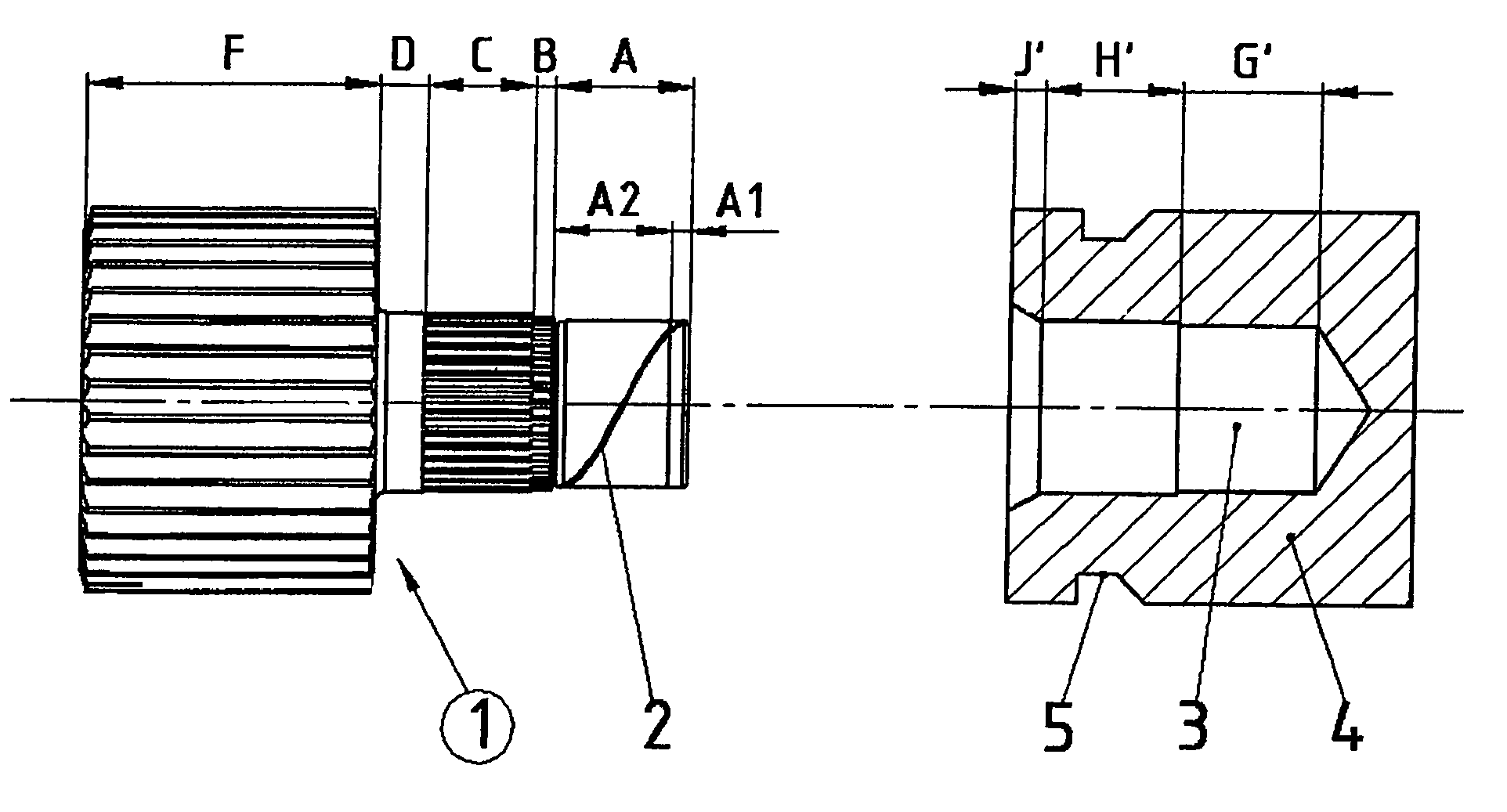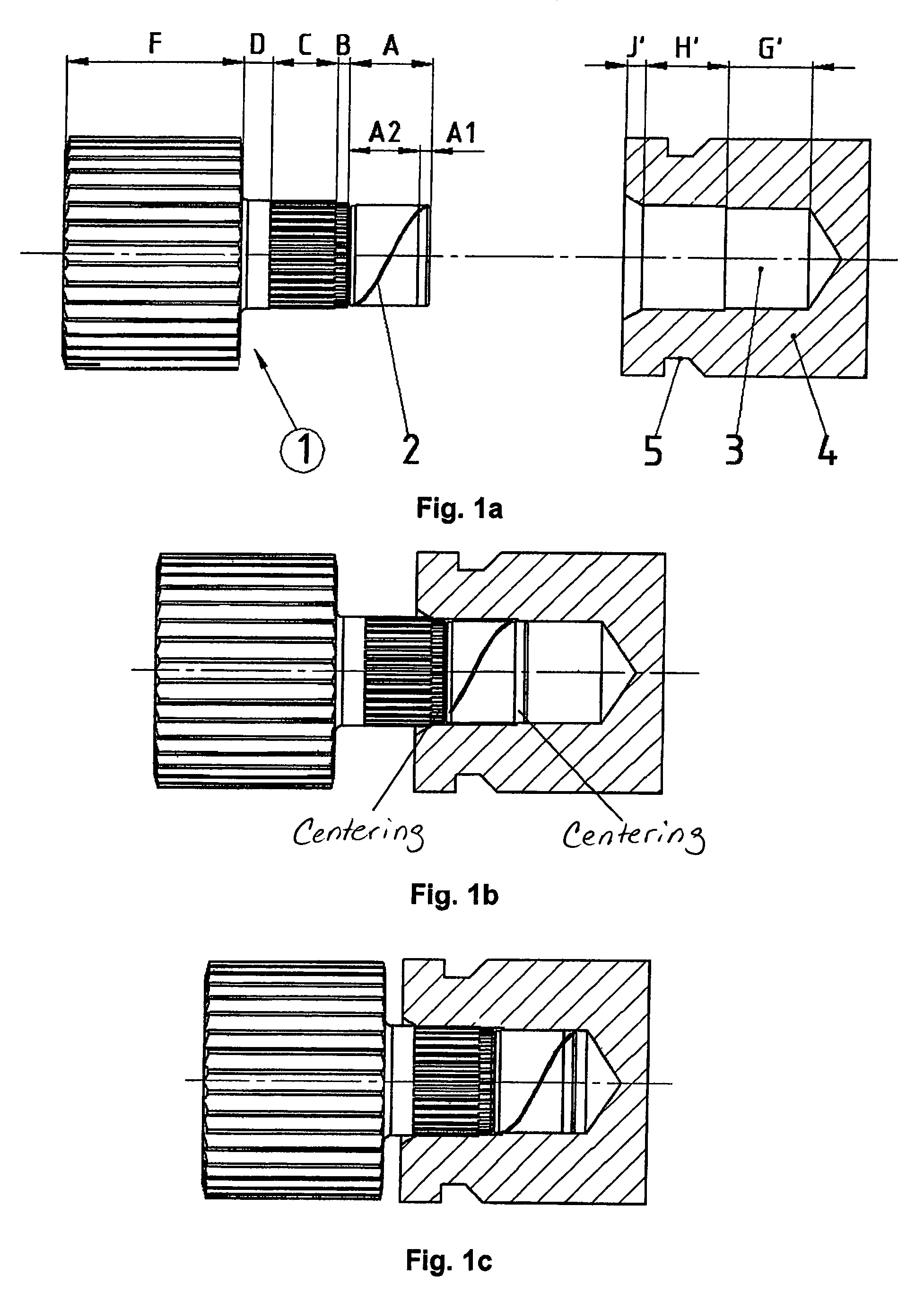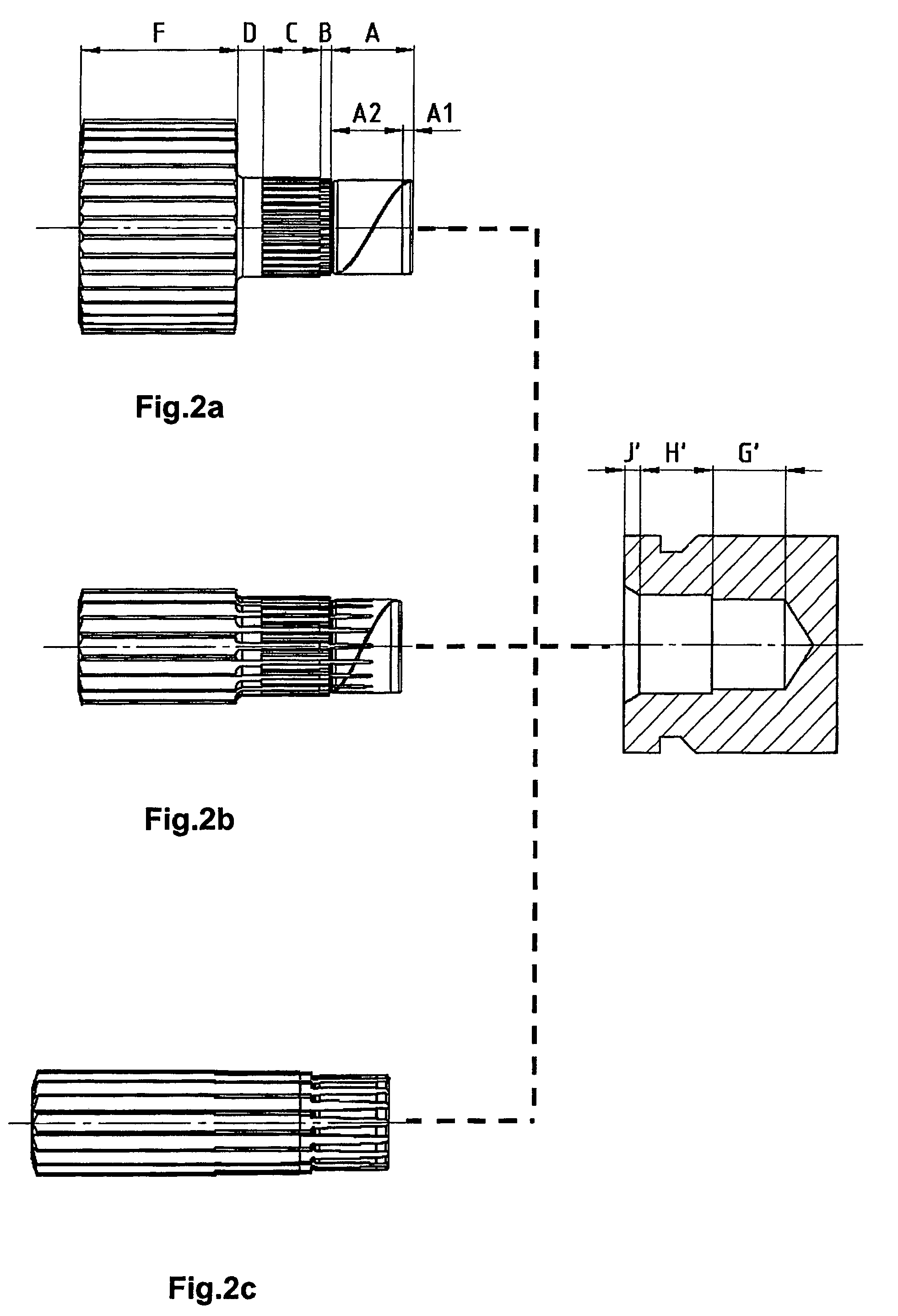Series of shafts and manufactoring method
a technology of shafts and manufacturing methods, applied in the direction of remote-control toys, couplings, manufacturing tools, etc., can solve the problems of inability to manufacture press fittings, complex and expensive manufacturing of press fittings, and low manufacturing cost of devices, so as to achieve low manufacturing cost, low manufacturing cost, and low manufacturing cost
- Summary
- Abstract
- Description
- Claims
- Application Information
AI Technical Summary
Benefits of technology
Problems solved by technology
Method used
Image
Examples
Embodiment Construction
[0058]Example embodiments of the present invention are explained in detail with reference to the appended Figures.
[0059]A shaft 1 and a receiving part 4 provided with a bore 3 are each separately illustrated in FIG. 1a.
[0060]In FIG. 1b, shaft 1 and receiving part 4 are illustrated at the start of assembly, i.e., when the shaft is lined up in receiving part 4.
[0061]In FIG. 1c, shaft 1 and receiving part 4 are illustrated at the end of assembly, i.e., in the pressed-in, fixed state.
[0062]The attachment of different shafts of the series to a receiving part, for example, a coupling, is illustrated in FIGS. 2a, 2b and 2c. In this context, the different shafts are each individually denoted as FIG. 2a, FIG. 2b, and FIG. 2c.
[0063]Illustrated in FIG. 3a, FIG. 3b, and FIG. 3c is the attachment of a shaft constructed with different necks, to correspondingly different receiving parts, e.g., as a direct attachment to different motor shafts of a motor series.
[0064]An exemplary embodiment of the...
PUM
| Property | Measurement | Unit |
|---|---|---|
| temperature | aaaaa | aaaaa |
| inner diameter | aaaaa | aaaaa |
| inner diameter | aaaaa | aaaaa |
Abstract
Description
Claims
Application Information
 Login to View More
Login to View More - R&D
- Intellectual Property
- Life Sciences
- Materials
- Tech Scout
- Unparalleled Data Quality
- Higher Quality Content
- 60% Fewer Hallucinations
Browse by: Latest US Patents, China's latest patents, Technical Efficacy Thesaurus, Application Domain, Technology Topic, Popular Technical Reports.
© 2025 PatSnap. All rights reserved.Legal|Privacy policy|Modern Slavery Act Transparency Statement|Sitemap|About US| Contact US: help@patsnap.com



